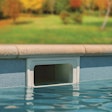
Drowning remains the number-two cause of death for children under five and this year, and of those drowning victims, 70 percent were boys and 70 percent of all child-drowning incidents occurred in pools.
It goes without saying that one person drowning, one family devastated, is far too many. With approximately 300 children dying in pools, it’s also self evident that our industry must continue to press ahead promoting safety in ways that will make a real difference.
It’s no secret that for years, the pool and spa industry has been bogged down in extremely specific debates about what contributes to safety. Some advocate fencing and cover laws, others argue those are not statistically effective measures and that instead we should be focusing on other technical solutions such as alarms and covers, while others still press for education teaching both parents and children about aquatic safety. These days many safety advocates, including the U.S. Consumer Product Safety Commission, promote layers of protection and stress parental supervision.
It’s fair to assume that all voices are well intending and yet for all of the debate, research and advocacy, clearly we still need to work harder.
Beyond the boundaries of the pool and spa industry, it is, I believe, equally important to view the entire aquatic safety picture, considering the impact of drowning tragedies in all aquatic settings. We know that swimming and exercising in water is the best possible form of exercise and the overall role that aquatic recreation plays in the fabric our lives and, indeed, our economy is incalculable. Yet, for all of that, we also know without doubt that water is dangerous.
Taking it all into consideration, this is an issue that is frustratingly complex and upsettingly horrific, but is this frequency of tragedy inevitable? The optimist in me says absolutely not.
In looking at drowning at its core, one thing stands out. Inevitably, people who drown or are injured in water are engaging in some form of a risky activity, whether they know it or not. Yes, you can say any exposure to water is risky and that is true, but in the case of alcohol consumption, for example, we know for a fact that drinking increases risks dramatically. Similarly, we know that although learning how to swim does not eliminate drowning risks, is there really any doubt that kids who know how to swim, or at least float on their backs, are less likely to drown?
When my own children were very young, we decided that they would take swimming lessons because of the amount of time they would spend in their lives in homes with backyard pools, playing in the ocean and vacationing on the shores of rivers and lakes. It seemed to me that this was the single-most important facet of aquatic safety, not the only measure, but the starting point.
This early exposure also had a side benefit that points in a far more positive direction. Both my kids love the water, are strong swimmers and my son, Brett, went on to become a competitive swimmer and water polo player. Later he became a lifeguard and for a time specialized in training children under 2 years old how to be safe in and around the water. In his case, those early childhood swimming lessons came full circle with a lifetime of healthy experiences.
To my mind, there is no downside in teaching kids, even young children, to swim. Is it the only answer to the vexing problem raised by the statistics cited above? Of course it’s not. And certainly there’s no question that as an industry we should promote awareness of, and access to, all measures of safety, from covers to alarms, self-closing and latching gates and yes, fences. By the same token, you can’t put a fence around the ocean, so the answers have to be broader in nature.
Certainly, municipalities should do their part with swimming warnings and restrictions, zoning, safety and emergency services. Ultimately, however, the best safety measure of all, in my humble opinion, is doing everything possible to raise generations of people who know how to swim and how to be safe in and around the water. We need to become a society of swimmers where the risks are known and respected, while at the same time the benefits of the life aquatic are enjoyed in good health and safety.












































